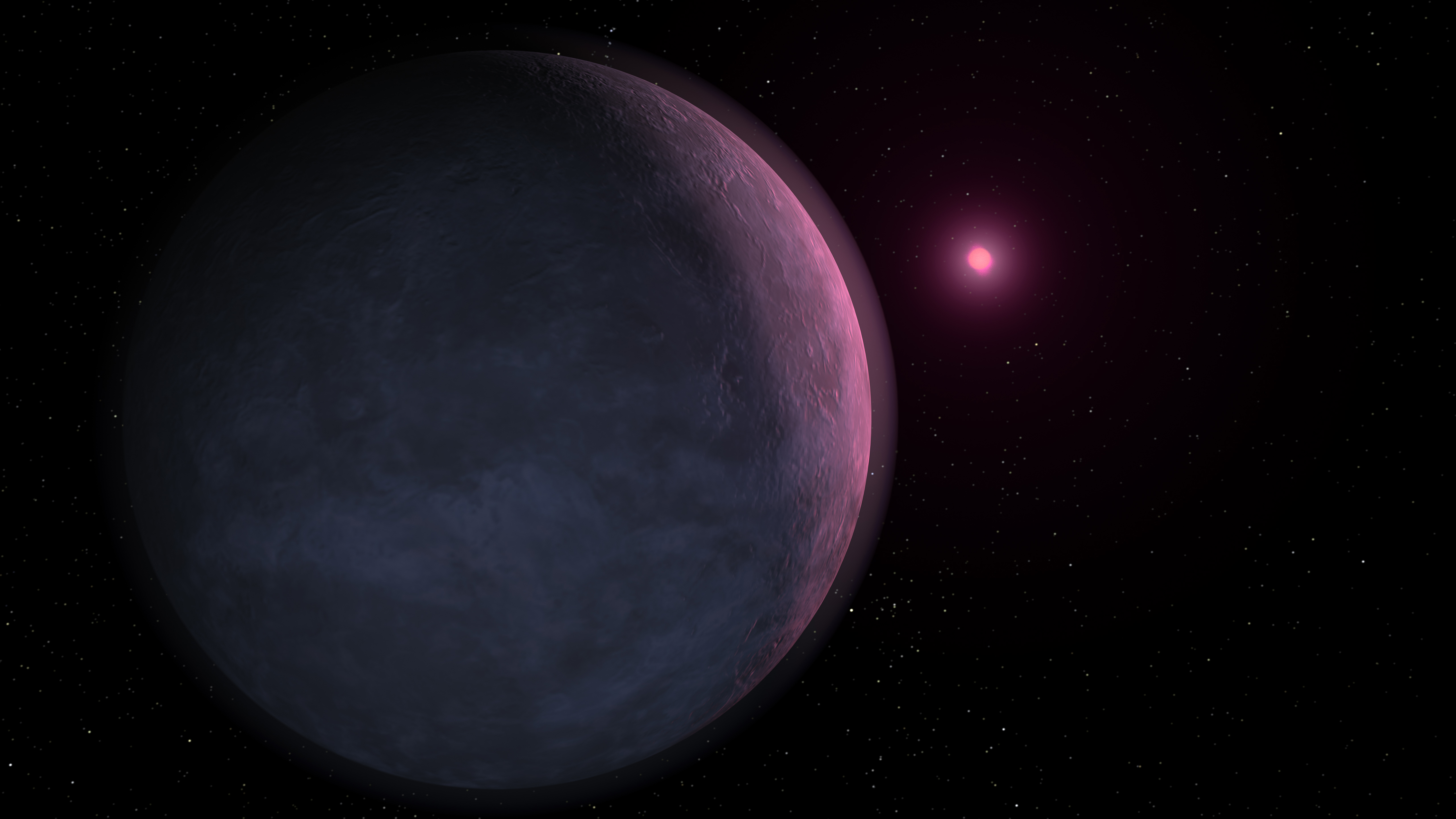- MOA-2007-BLG-192Lb
Planetbox begin
name = MOA-2007-BLG-192LbPlanetbox image

caption = An artist's impression of MOA-2007-BLG-192Lb orbiting its primary.Planetbox star
star =MOA-2007-BLG-192L
constell = Sagittarius
ra = RA|18|08|04cite web |url=http://exoplanet.eu/star.php?st=MOA-2007-BLG-192-L |title=Notes for star MOA-2007-BLG-192-L |accessdate=2008-06-16 |work=The Extrasolar Planets Encyclopaedia |publisher= |date= ]
dec = DEC|−27|09|00
dist_ly = 3000±1000
dist_pc = 1000±400Table 3, A Low-Mass Planet with a Possible Sub-Stellar-Mass Host in Microlensing Event MOA-2007-BLG-192, D. P. Bennett et al., [http://arxiv.org/abs/0806.0025v1 arXiv:0806.0025v1] . bibcode|2008arXiv0806.0025B]
class = Planetbox orbit
separation = 0.62+0.22−0.16
position_angle =
semimajor =
semimajor_no_units =
eccentricity =
period =
period_year =
inclination =
ang_dist =
long_peri =
arg_peri =
t_peri =
t_peri_no_jd =
t_transit =
t_transit_no_jd =
t_approach =
semi-amp = Planetbox character
mass =
mass_earth = 3.3+4.9−1.6
radius =
radius_earth =
density =
gravity =
gravity_earth =
temperature = Planetbox discovery
discovery_date =30 May 2008
discoverers = Bennett "et al."
discovery_method =Gravitational microlensing
discovery_site = Mount John University
Observatory,
flag|New Zealand
discovery_status = AnnouncedPlanetbox reference
star = MOA-2007-BLG-192-L
planet = b
simbad = NAME+MOA+2007-BLG-192-L+bMOA-2007-BLG-192Lb, occasionally shortened to MOA-192 b, [ [http://planetquest.jpl.nasa.gov/atlas/atlas_search.cfm Planet Quest: New Worlds Atlas] ,
JPL . Accessed on lineJuly 2 ,2008 .] is anextrasolar planet approximately 3,000light-year s away in theconstellation of Sagittarius. The planet was discovered orbiting thebrown dwarf or low-massstar MOA-2007-BLG-192L . At a mass of approximately 3.3 times that of Earth, it is one of the smallest known extrasolarplanet s. It was found when it caused a microlensing event on the night ofMay 24 ,2007 , which was detected as part of theMOA-II gravitationalmicrolensing survey at theMount John University Observatory inNew Zealand .The system's primary is small as well. At roughly 6% the mass of our sun, it is probably too small to sustain fusion reactions, making it a dimly glowing brown dwarf. Also, the estimated projected distance between MOA-2007-BLG-192Lb and its primary is approximately 60% of the Earth-Sun distance. That means the planet probably formed with lots of ice and gases, more like
Neptune (anice giant planet) in composition thanEarth (aterrestrial planet ), according to astronomer David Bennett of theUniversity of Notre Dame . [http://sciencenow.sciencemag.org/cgi/content/full/2008/602/1 Smallest Extrasolar Planet Portends Other Earths] , Richard A. Kerr, "ScienceNOW Daily News",June 2 ,2008 . Accessed on lineJune 16 ,2008 .]References
External Links
*
*
Wikimedia Foundation. 2010.
